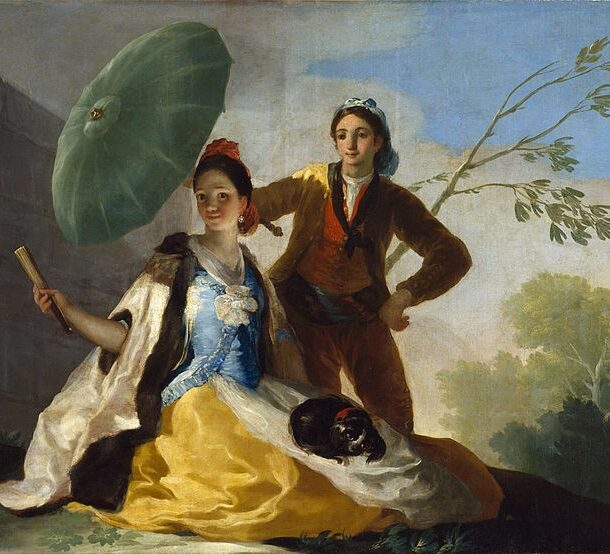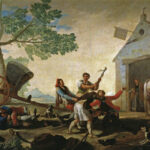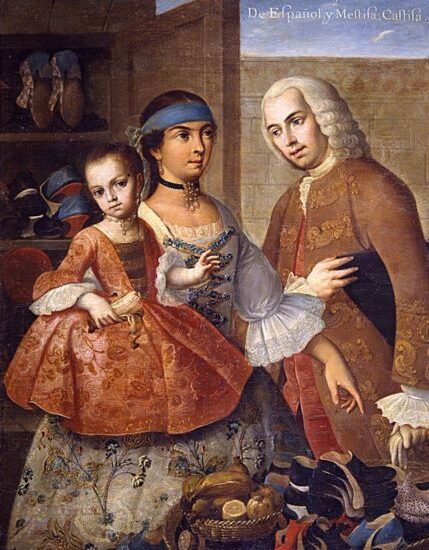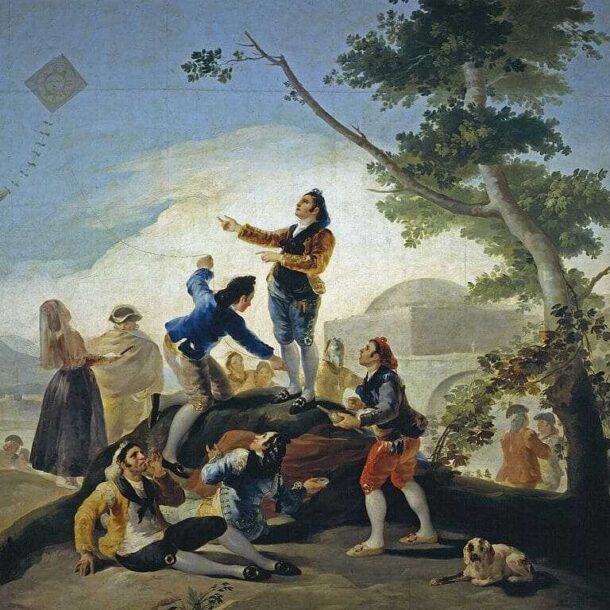
Tapestry cartoon depicting a brawl in front of what Goya defines as Venta Nueva. Although its walls are cracked and the cross that crowns it is tilted to one side, with a certain irony it provides a metaphorical sense of the timelessness of human violence. The inn is located at a crossroads, where a variety of characters gather, carriage drivers and muleteers whose attire reveals that they come from different parts of Spain. The golds and clubs thrown on the table indicate the motif of the fight in which the protagonists use all possible weapons (stones, sticks, knives and even a pistol). The theme of the work is reminiscent of similar compositions typical of the genre scenes of the Flemish and Dutch tradition used in the manufacture of tapestries since the 17th century. However, Goya conceived his composition with the grandeur of Italian classicism, and some of the figures and groups are even derived from classical sculpture.
Collection: Images
Project: 3. Rural world and urban world in the formation of the European identity., 4. Family, daily life and social inequality in Europe., 7. Persecuted by justice and powers: rebels, political dissidents and criminals in the history of Europe.
Chronology: XVIII
Scope: Secondary Education, Baccalaureate, University
Resource type: Image
Format: Oil on canvas (275 x 414 cm)
Source: Museo del Prado (Madrid)
Language: Spanish
Date: 1777
Owner: Álvaro Romero González (Modernalia)
Identifier: P000770
Copyright: Museo del Prado (Madrid)
Abstract: Social conflict around a sale in 18th-century Spain as depicted by Goya
Image
Tags







